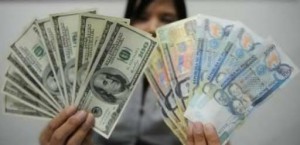2016 Outlook, part 2
By Randell Tiongson on January 19th, 2016
This installment will showcase the views of James Lago of PCCI Securities Brokers Inc.
James is one of the most insightful and in-depth analyst I know and this is because he sees things from a big picture approach being an economist and an analyst at the same time.
—————-
Economy – For 2016, our initial GDP growth forecast range is 5.8% –
6.0%. This baseline assumption is premised on the following growth
rates of the major industry groups: industry growing by about 5.3%,
services expanding by 6.0% and agriculture posting a 1.0% growth. On
the expenditures side, we see household spending (HFCE) rising by 5.9%
– 6.4% as the continued decline in energy prices will still translate
to additional disposable income. The major election year historical
contribution to GDP is likewise considered.
Should the lower energy prices environment continue, we forecast 2016
inflation to remain manageable. Factoring in our anticipated
peso-dollar exchange rate this year, our initial yearend CPI range
forecast is 146.0 – 147.0 resulting in an average inflation forecast
ranging from 2.0% – 2.3% using the 2006 base year.
PSEi – The bullish trend since its recovery in 2009 remains intact. A
new historic high of 8,136.97 was recorded as the bull market entered
its 7th consecutive year last year, surpassing our most optimistic
estimates but was certainly short-lived.
2015 starts with an unfolding minor correction phase and the leading
relative valuations still above its historical averages, and at a
premium to the regional average anew. Since only a 23.8% correction
of the 2009 – 2015 uptrend was achieved, the corrective phase may
still continue in to 1H 2016 before a real rebound unfolds. Most
corporate earnings will continue to improve even at a base case of a
slower growth rate compared to 2015. Our base case scenario for the
PSEi this year is minor supports of the ongoing healthy correction at
6,200 and 6,000 before a recovery to 7,000 – 7,300. Undoubtedly, the outcome of the Presidential elections will sway investor confidence.
Peso – The peso depreciated as expected last year as international
investors continued to move back to dollar assets.Net portfolio
outflows primarily from equities, weak net FDI flows and lower export
receipts sent the peso to a 47.49 low, way past our 46.00 – 47.00 base
case scenario.
For this year, we see the ICE dollar index rising to at least 101.50,
as funds continue to flow back into US dollar assets given the FOMC’s
gradual interest rate normalization. The pace should not be as severe
as that in 2015. With this, our base case scenario therefore for the
peso is a depreciation to around 48.00 that will result in a 76.4%
retracement of its October 2008 – January 2013 appreciation. A further
depreciation to 49.00 is possible if the former is surpassed. While it
is currently at equilibrium at around 47.00, an appreciation back to
46.00 or even 45.00 is possible.
The PBOC’s managed weakening of the renminbi (or yuan) will not
significantly impact on the peso. We were not surprised by this
development after their initial action in August last year as the PBOC
is guiding China’s currency to a level that it believes will be
appropriate given several variables. Our base case scenario for the
renminbi is an eventual return to the RMB/CNY6.80
level.
Domestic Fixed Income Yields – Real returns on the short-term yields
turned positive by mid-year last year as inflation slowed and
investors took profits price-wise to demand higher yields ahead of the
U.S. Fed’s interest rate normalization. The yield curve underwent a
nonparallel upward shift and remained a normal yield curve at yearend.
The spread between the average short and long-term yields spread was
below our 200 – 250 bps range expectation throughout last year as the
medium and longer tenor yields did not move up significantly.
For 2016, the yield curve is also seen to remain essentially normal
with yields ranging in between early-2012 to 2013 levels. The spread
between the average short-term and long-term yields might move within
a 150 – 200 bps range and investors will continue to be opportunistic
to find ways around the yield levels. We expect corporate debt raising
and preferred shares offerings to continue this year as rates remain
affordable vis-à-vis historical levels coupled with the gradual rate
hike path in the U.S.
Portfolio Strategy – Our overall core equity strategy remains anchored
on the soundness of a firm’s core business model and its stock’s key
relative valuations, PER and PBV, trading at a discount to the PSEi’s
averages. It is also worth looking into some key index heavyweights as
the valuation premium have narrowed to reasonable levels versus the
PSEi’s averages
Taking account as well of a generally bearish market scenario and a
consumption driven GDP growth that will get an added lift from
election-related spending, high dividend yield, non-cyclicals and
baseline consumer stocks are on top of our recommendations. Should a
firming up of global equities markets occur by midyear, there should
be no hesitation to switching from a dividend yield play to capital
appreciation to improve total return.
Our recommendation for fixed income investors is still to spread out
investments over the offerings this year and several tenors for
diversification. Short-term yields are now at attractive levels
vis-à-vis inflation expectations. Positive real returns may be
harvested again.The suggested average tenor or duration of the
portfolio is it is skewed to the relative middle of the middle-tenor
ranges given that yields across the yield curve range at the start of
2016 are attractive.
 Joseph James Lago is AVP of the PCCI Securities Brokers Corp. He has over 2 decades of experience in the investments industry in various capacities. He is also a professor of the De La Salle University Graduate School teaching in Management and Economics. He is a much sought after researcher, economist and analysts. He is a Registered Financial Panner.
Joseph James Lago is AVP of the PCCI Securities Brokers Corp. He has over 2 decades of experience in the investments industry in various capacities. He is also a professor of the De La Salle University Graduate School teaching in Management and Economics. He is a much sought after researcher, economist and analysts. He is a Registered Financial Panner.
2015 Outlook, part 7
By Randell Tiongson on January 20th, 2015
In this installation of the 2015 Outlook series, my friend James Lago of the PCCCI once again gives us his highly valuable views on many factors that will affect 2015 — Economic growth, stock market, US dollars, interest rates, liquidity and more. His outlook will be very helpful as to those who are taking a closer look at their portfolios.
The 2015 Outlook of James Lago
Economy – For 2015, our initial GDP growth forecast range is 6.0% – 6.6%. This baseline assumption is premised on the following growth rates of the major industry groups: industry growing by another 6.5%, services expanding by 6.0% and agriculture posting a 2.5% growth. On the expenditures side, we firmly believe that the substantial decline
in energy prices will translate to increased disposable income which in turn will translate to household spending (HFCE) projected to rise by 5.5% – 6.0%.
The major dividend from lower energy prices is lower inflation. Factoring in our anticipated peso-dollar exchange rate this year, our initial average inflation forecast for the year ranges from 2.1% – 2.5% using the 2006 base year.
PSEi – The bullish trend since its recovery in 2009 remains intact. A fresh historic high of 7,413.62 was achieved as the bull market completed its 6th consecutive year last year.
2015 starts with the leading and trailing relative valuations above its historical averages, as well as the regional average again. The lower energy price benefits will certainly be this year’s major driver. Investors are optimistic that the Philippine economy could post a 6.0% GDP growth rate, at least, for this year. Corporate
earnings will most certainly improve as a result of margin improvement and higher volume sales. Our base case scenario for the PSEi this year is a rise to 7,500 – 7,800. Healthy corrections in between is expected and we see the supports at 6,800 and 6,650.
Peso – US dollar – For this year, with the dollar index firmly above the key level of 90, and as funds flow back into US dollar assets, we see the peso probably depreciating to 46.00 or even 47.00. It will result in a 61.8% to 66.0% retracement of its October 2008 – January 2013 appreciation. On the appreciation side, an appreciation to 44.50 or even 44.00 cannot be discounted within the year as the country will continue to attract both FDI and portfolio inflows given its continued growth prospects and its investment grade rating.
dollar assets, we see the peso probably depreciating to 46.00 or even 47.00. It will result in a 61.8% to 66.0% retracement of its October 2008 – January 2013 appreciation. On the appreciation side, an appreciation to 44.50 or even 44.00 cannot be discounted within the year as the country will continue to attract both FDI and portfolio inflows given its continued growth prospects and its investment grade rating.
Domestic Fixed Income Yields – Real returns on the short-term yields remained negative anew in 2014 despite the sell-off in the latter part of the year. The year ended again with a normal yield curve whose steepness was reduced as the spread between the average short and long-term yields narrowed sharply to 160.30 bps, way below its 250 – 300 bps range.
Excess liquidity and portfolio flows into peso-denominated fixed income securities will most likely keep the continued rise of domestic yields gradual overall. The negative real returns on short-term yields in 2014 might not be absurd compared to the past few years. The flattening of the country’s yield curve, a historical first, is a possible scenario. The spread between the average short-term and long-term yields will most likely move within a 200 – 250 bps range within the year as investors will continue to find ways around the yield levels. The yield curve is also seen to remain essentially normal in 2015 with yields in between 2009 and 2012 yield levels.
Portfolio Strategy – Our overall core equity strategy for this year continues to be anchored on the soundness of a firm’s core business model and its stock’s key relative valuations, PER and PBV, trading at a discount to the PSEi’s averages. Cognizant of the benefits of lower energy prices on consumption spending and the fact that consumer-related or proxy stocks’ relative valuation are trading at a premium to the market’s averages, we chose only those whose premiums are reasonable enough to give investors a better upside potential. As a whole, lower energy prices will be beneficial to most firms by way of improved margins and increased volume sales. Several of the stocks in our short list also have attractive, above market average dividend yields.
Given the potential of a near flattening of the country’s yield curve, driven by the normalization of short-term yields and the low inflation scenario, corporates are seen to continue taking advantage of still affordable medium to long-term yields. We continue to encourage investors to take a serious look at the existing PSE-listed preferred
shares and possible new offerings in 2015 as the yields will remain attractive. For fixed income securities, investors will have to be opportunistic again, taking advantage to purchase, when yields touch attractive levels within the year. It is still best to diversify the fixed income portfolio across various tenors to optimize the portfolio yield. The suggested average tenor or duration of the portfolio must be within the short to middle-tenor ranges as yields on the long dated instruments are not attractive for now.
 Joseph James Lago is the Head of the PCCI Securities Brokers Corp. He has over 2 decades of experience in the investments industry in various capacities. He is also a professor of the De La Salle University Graduate School teaching in Management and Economics. He is a much sought after researcher, economist and analysts. He is a Registered Financial Panner.
Joseph James Lago is the Head of the PCCI Securities Brokers Corp. He has over 2 decades of experience in the investments industry in various capacities. He is also a professor of the De La Salle University Graduate School teaching in Management and Economics. He is a much sought after researcher, economist and analysts. He is a Registered Financial Panner.
2014 Outlook, part 7
By Randell Tiongson on January 15th, 2014
It is my pleasure to presenting the views of Prof. James Lago of the PCCI. James is one of those experts that I often consult especially with the technicals of investing. His views have both macro and micro perspective and many have found his views helpful.James is also an esteemed colleague from the Registered Financial Planner Institute.
The 2014 Outlook of James Lago
On the PSEi
After being the region’s second best performer by May last year, the PSEi reversed course and ended 2013 with a gain of only 1.33%. The bullish trend since its recovery in 2009 remains intact. 2014 starts with the leading and trailing relative valuations at reasonable levels although these are still above its historical averages, as well as the regional average. We anticipate that equity prices will not be as volatile compared to last year. Investors remain optimistic that the Philippine economy could post a 6.0% GDP growth, at least, for this year, albeit slower than 2013’s clip. Corporate earnings are seen to be mixed given issues affecting some sectors. As a whole, our base case scenario for the PSEi this year is range bound trading within a 5,800 – 6,800 range. We view this as a fresh base building for a resumption of the major uptrend in the future.
On the peso-dollar
The peso exhibited its historical tendency to depreciate sharply as it surpassed the 43.00 – 44.00 resistance we expected, touching a 3-year low of 44.75 versus the U.S. dollar in late-August. The overall movement in 2013 was a 43.66% retracement of the November 2008 – January 2013 appreciation and has begun to recouple again with the US dollar’s gradual appreciation. Given the continued flow back into U.S. dollar assets, as well as developed markets, by foreign investors, the peso’s depreciation will most likely continue into 2014. The minor resistances of this depreciation are seen at 45.40 and 46.00. An
appreciation within the year to around 43.00 or even 42.70 is possible as another round of portfolio inflows cannot be discounted within the year.
On domestic yields
Given the calibrated monetary stimulus tapering that will be done by the U.S. Fed staring in January, we expect the yield curve to gradually shift upward. Excess liquidity and portfolio inflows into peso-denominated fixed income securities will most likely keep the rise gradual overall. We expect the negative real returns on short-term yields to continue into 2014. Yields on the longer-tenor instruments will certainly be higher as a result of the Fed’s action as U.S. treasury yields are the global benchmark. The spread between the average short-term and long-term yields will most likely move within a 280 – 330 bps range within the year as investors will continue to find ways around the yield levels. The yield curve is also seen to remain normal and will most likely surpass the end-2012 yield levels.
On the economy
For 2014, our initial GDP growth forecast range is 6.0% – 7.0%. Behind this is household spending (HFCE) projected to rise by 5.5% – 6.0%, the manufacturing sector continuing its above historical average expansion of around 7.0% – 8.0%, exports recovering by a modest 4.0% – 5.0%, the construction sector growing by above 10.0% as a result of
the reconstruction to be undertaken in the calamity damaged provinces, continued infrastructure spending private sector contribution. The services sector expansion is still seen to be an above-average 6.0%-7.0%.
 Joseph James Lago is the Head of the PCCI Securities Brokers Corp. He has over 2 decades of experience in the investments industry in various capacities. He is also a professor of the De La Salle University Graduate School teaching in Management and Economics. He is a much sought after researcher, economist and analysts. He is a Registered Financial Panner.
Joseph James Lago is the Head of the PCCI Securities Brokers Corp. He has over 2 decades of experience in the investments industry in various capacities. He is also a professor of the De La Salle University Graduate School teaching in Management and Economics. He is a much sought after researcher, economist and analysts. He is a Registered Financial Panner.
 Joseph James Lago is AVP of the PCCI Securities Brokers Corp. He has over 2 decades of experience in the investments industry in various capacities. He is also a professor of the De La Salle University Graduate School teaching in Management and Economics. He is a much sought after researcher, economist and analysts. He is a Registered Financial Panner.
Joseph James Lago is AVP of the PCCI Securities Brokers Corp. He has over 2 decades of experience in the investments industry in various capacities. He is also a professor of the De La Salle University Graduate School teaching in Management and Economics. He is a much sought after researcher, economist and analysts. He is a Registered Financial Panner.


